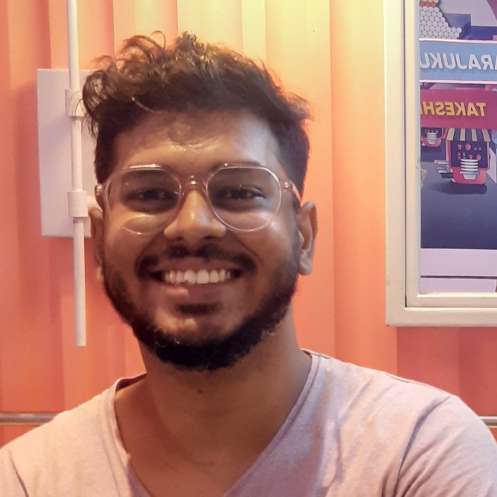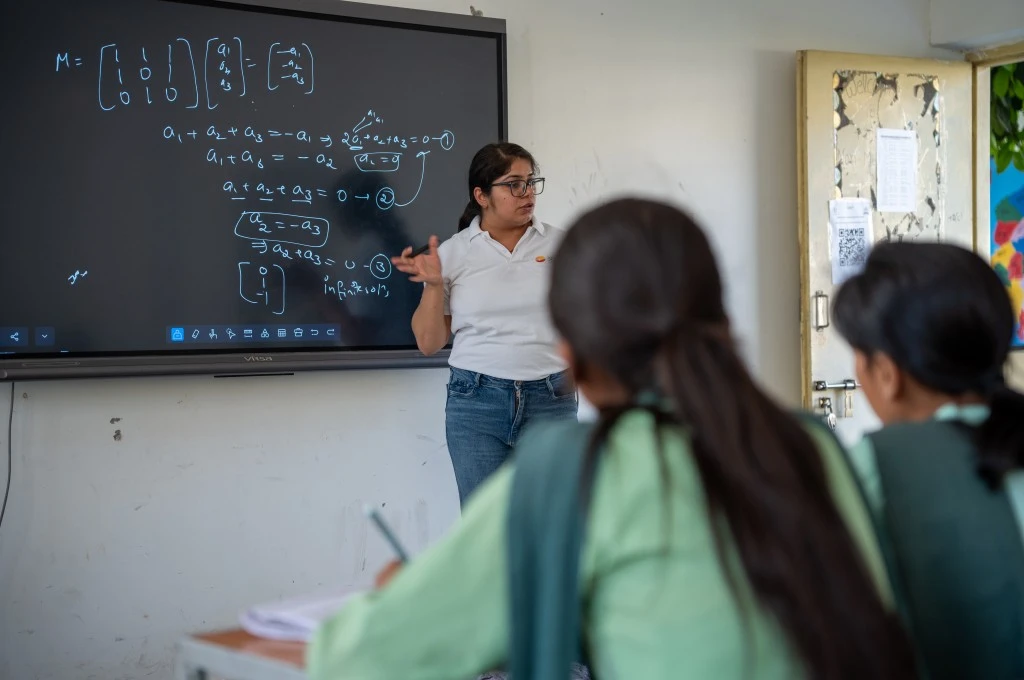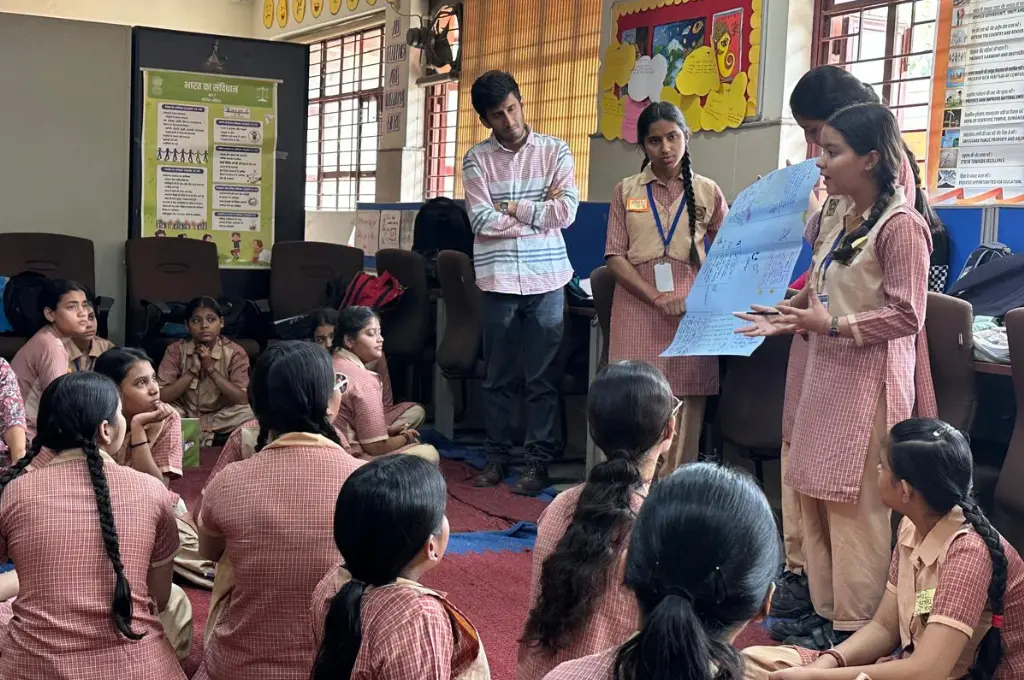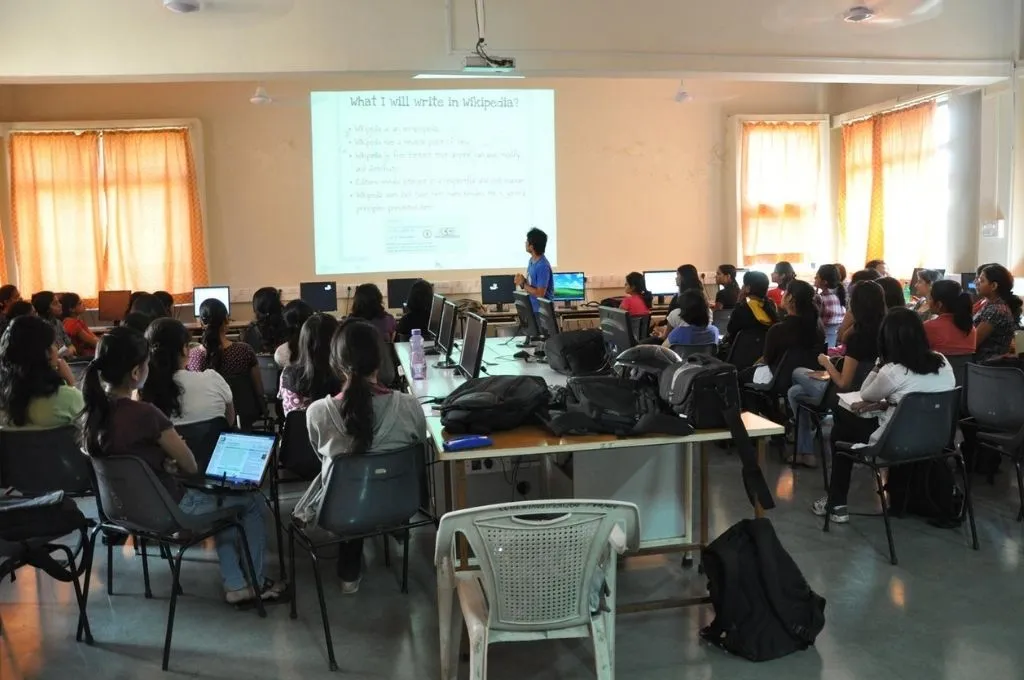While the world looks to pastoralists to learn about the conservation of ecosystems and climate adaptation, the custodians of this knowledge in Jammu and Kashmir remain invisible and marginalised for want of education, and even functional literacy.
Jammu and Kashmir, which acquired union territory (UT) status in 2019, has a large tribal population, constituting 11.9 percent of the total. Of this, pastoralist communities form the majority. In 2011, literacy among the largest group—Gujjar-Bakarwals—was at approximately 22 percent. A decade on, those working on education in the state say it remains abysmally low. This is also true for the Chopans, who are yet to be recognised as scheduled tribes. Not only is school enrolment from these communities lower than 50 percent, about half of those who do enrol drop out after the primary level.
Members of these communities are unable to fight for their rights, make the most of government policies and schemes, and avail public facilities, such as healthcare, because they do not have the language or the confidence to interact with the system. It is difficult for them to understand and access the market and earn more from their high-quality cheese, sheep wool, or knowledge of traditional healing.
Showkat Choudhary, a Gujjar-Bakarwal youth leader from Shopian, Kashmir, says, “Our people continue to die in natural disasters such as cloudbursts, and relief is either delayed or never arrives. Even the nonprofits working in the area never come to us because we live in hard-to-reach places.”
The region is known for administrative and infrastructure challenges and has a history of political unrest. The lifestyle of these communities, who rear goats, sheep, and buffaloes, also calls for flexible and sensitive models of education.
Seasonal migration
The Gujjar-Bakarwals and Chopans migrate to higher altitudes during the summer months in search of richer pastures for their livestock. As the shepherds and goatherds move so do their children, and their education takes a backseat during those months.
Parvaiz Ahmed Famda, a teacher in Katiyanwali, Baramulla, says, “All students in the government school I teach at are Gujjar-Bakarwal. From April to November–December every year, they migrate to forests in Gulmarg, Pir Panjal, or Hindukush. In the summer, only around five out of 50 students attend school.” Parvaiz is from the community too and is keen to bring more children from it into the educational system. He says migration is an obstacle to their enrolment and disrupts the schooling of those who do join school.
On their return to the base in winter, children are often unable to get to school because of snow. Rouf Mohiuddin Malik, an educator who runs schools for pastoral children in Budgam district, says, “There is a window each year when everything is closed because of snow. As a result, four to five months is the most teachers get with these students.” Approximately 50 percent of the enrolled children drop out before the ninth standard, and often after primary school.
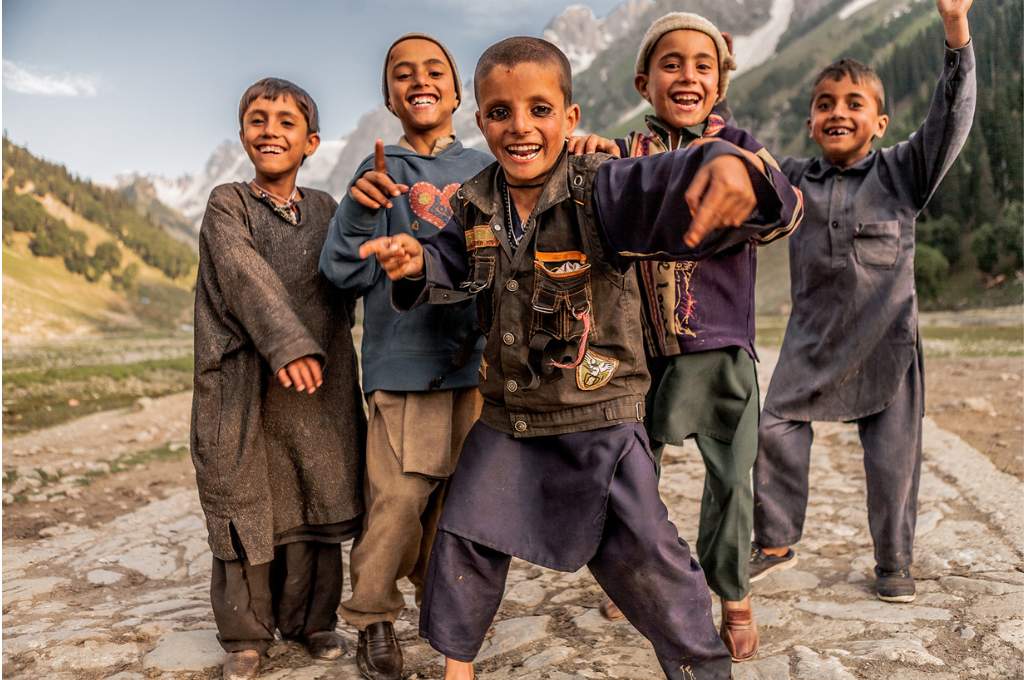
Livelihood challenges
Reports suggest that, during the pandemic, many children had to quit school because their parents were faced with financial crises. Many of them help with work and supplement their family incomes, which are already meagre. Raja Muzaffar Bhat, an RTI activist in Kashmir who works closely with schools for pastoral children, says, “The Chopans don’t even own the livestock they rear; these are owned by other people. For INR 10,000–12,000 per month, they brave the rain and cold to take sheep to grasslands.”
Chopans are not beneficiaries of government schemes as they are not recognised as scheduled tribes.
Gujjar-Bakarwal children do get small government scholarships for attending government schools. At the ‘smart school’ where Parvaiz teaches, students get between INR 500 and INR 900, depending on their age and gender. But this is not always enough incentive. Chopans are not beneficiaries of government schemes as they are not recognised as scheduled tribes.
Aaliya Jan, a councillor of the Anantnag municipal committee and a local BJP leader, says she spends a lot of time persuading parents to send their children to the school she has set up in Pahalgam, Anantnag. “They tell me they don’t have the income. They can afford government schools up to a point. But they don’t have the money to send their children to 10+2 or to college.”
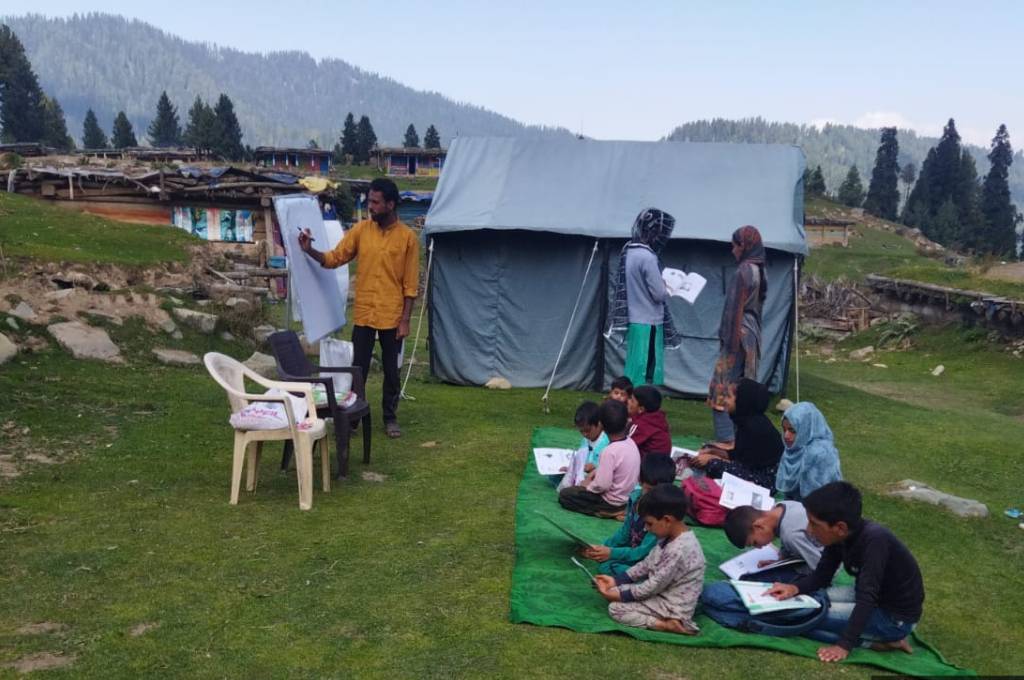
Gender bias
Education is far more challenging for girls than it is for boys from these tribal communities. When families migrate, they are sometimes willing to leave their sons with friends or relatives or in residential schools. But they are not comfortable doing this with their daughters.
The literacy rate among women in pastoralist groups lags far behind the country and UT average. A recent survey indicates that literacy among women in Jammu and Kashmir is at approximately 67 percent, which does not compare badly with the Indian average of approximately 70 percent. The UT fares better than many large states in the country on this social indicator. “In Kashmir, many women attend college and university. This is not true of the Muslim population in UP, Bihar, or even Delhi. But when the Chopans and Gujjar-Bakarwals leave for the mountains, their daughters can’t join school, and it is not because these girls don’t want to study,” Raja says.
Education for girls remains an afterthought.
Aaliya says that, in Pahalgam, migration has decreased because tourism brings the community income throughout the year. Even here, education for girls remains an afterthought. “Parents don’t want to send their daughters to school because women move in with the in-laws after marriage,” she says. Aaliya has been working to improve the gender ratio in the school she started before the pandemic. “I tell families that an educated woman can have a positive influence on two families. Educated mothers will ensure the schooling of their daughters,” she says.
Social discrimination
Their social status is a major disincentive for pastoralist children at government schools. Aaliya says, “Even schoolteachers use derogatory terms such as jungli or dehati for our people. It breaks the children’s confidence. No one should ever have to feel ashamed about who they are.” Raja says, “Chopans stay up at night to protect the livestock they graze. They are mistrusted and called thieves by other communities.” In higher institutions, Parvaiz adds, the students often hide their identity to avoid being shamed for it.
Aaliya believes that setting up schools exclusively for students from pastoral communities may help the cause. Parvaiz, who powered on with his own education despite the stigma, says increasing their strength in numbers will help. “In institutions for higher education, we need to build a jhund (herd) of our people.”
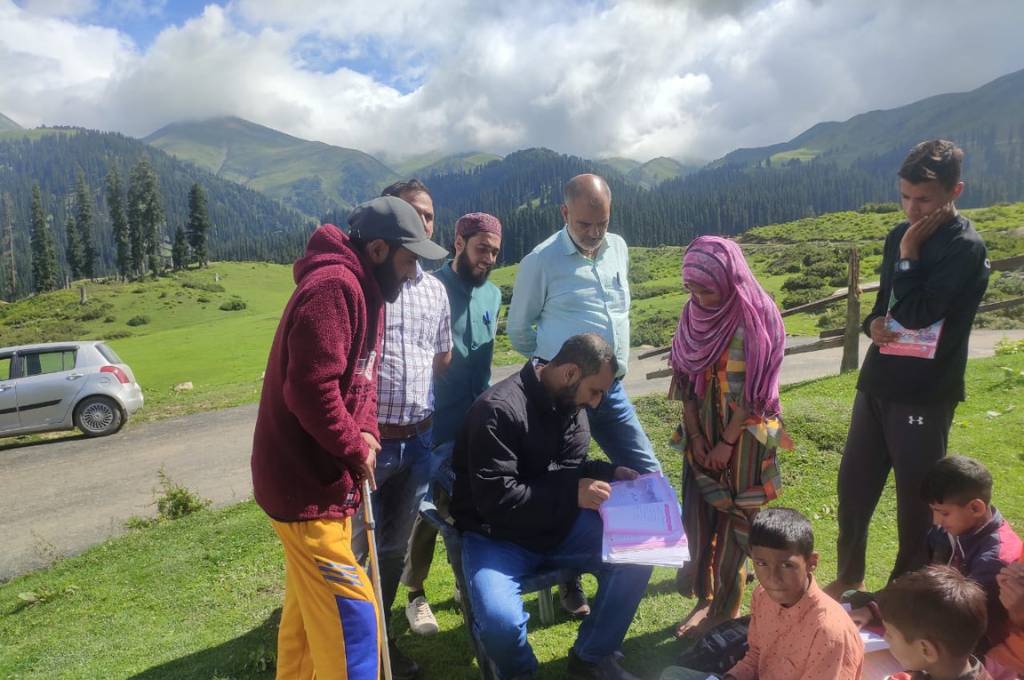
Interventions and challenges
The government has tried to address the gap in education for Gujjar-Bakarwals, but its interventions are marred by poor planning and implementation.
1. Mobile schools and seasonal camps
In the 1970s, the government set up mobile schools that allowed teachers to travel with a migrating group. The teachers were given a tent they could use for classes. These mobile schools were functional until 1990, but the initiative fizzled out because of unrest in the area. Seasonal schools were restarted in 2002. But there are not nearly enough to cater to all migrating groups. Many of these schools, while active on paper, are actually defunct. In places like the interiors of Anantnag, people say they haven’t heard of such a school in a decade. “I have been visiting pasturelands at greater heights for the past three years. I haven’t seen any mobile or seasonal schools operational there,” Raja says.
It is challenging for students to study with the current arrangement and infrastructure.
Where these schools are running, it is challenging for students to study with the current arrangement and infrastructure, says Parvaiz. Students can make time only after the day’s work, and there is no electricity in the evening. There is no connectivity in these areas. Not every teacher has a tent and, when available, the tents are not waterproof. “The rain in the forest is torrential. When it rains, it’s impossible to study inside,” he adds. It doesn’t help that the students are from different age groups. Many of them have never been to school before. Rouf says, “We have situations where a teacher is teaching a seven-year-old, a 10-year-old, and a 15-year-old together and struggling to decide an ideal curriculum.”
2. Seasonal teachers
For the seasonal schools, the education department of the Kashmir government selected volunteers as teachers. Parvaiz says, “These teachers are not qualified to teach beyond primary classes, and they cannot teach all subjects.” Rouf agrees and says, “Most of them haven’t even studied up to the 12th standard. People with political connection often occupy the position but never actually visit the schools.”
The volunteers used to get a monthly salary of INR 4,000 until recently. Now they get INR 10,000. However, not many qualified candidates are willing to get on board because volunteering does not offer job security.
3. Residential schools
In 1991, there was an initiative to set up residential schools for tribal students who had passed the fifth standard. Parvaiz says, “These hostels were often mired in issues of corruption. They were badly run, there was no electricity, and the living conditions were not good. Fortunately, the situation has improved since then.”
However, the number of such hostels is not adequate. After two years of visiting officials, Showkat persuaded the government to start one in Shopian. “The hostel has been functioning since 2021, and 125 Gujjar-Bakarwal children are pursuing undergraduate courses here,” he says. These hostels offer a limited number of seats.
While in some districts there are hostels for Gujjar-Bakarwal boys, there are no such facilities for girls. Aaliya says, “Female students have to travel far if they want to study further.”
It isn’t that there aren’t systems in place. Kashmir’s problem is the poor implementation and evaluation of existing education programmes. The mobile schools and residential schools are good ideas, but need better infrastructure and well-trained and fairly paid teachers. The government can train more women to teach because schools confirm that the students are more comfortable learning from them. Further, they have proved to stay longer in the job than men.
Education experts from the communities have also proposed alternative curriculums that are cognisant of the livelihoods of pastoralists. They feel the children should be taught entrepreneurship lessons in schools so that they can combine their traditional knowledge of livestock rearing with market understanding. The pastoralists in Kashmir are willing to be involved in planning a better tomorrow for themselves, but is anyone listening?
—
Know more
- Read this article to learn about the challenges faced by Adivasi communities in Chhattisgarh.
- Watch this video to understand why cow herders in Gujarat are fighting against a law that restricts the movement of cattle.
- Read this article to learn about the Chopans of Kashmir and the challenges they endure.




